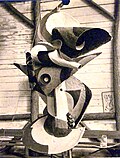
Art colonies are organic congregations of artists in towns, villages and rural areas, who are often drawn to areas of natural beauty, the prior existence of other artists, art schools there, or a lower cost of living. They are typically mission-driven planned communities, which administer a formal process for awarding artist residencies. A typical mission might include providing artists with the time, space, and support to create, fostering community among artists, and providing arts education, including lectures and workshops.
Contemporary classical music is Western art music composed close to the present day. At the beginning of the 21st century, it commonly referred to the post-1945 modern forms of post-tonal music after the death of Anton Webern, and included serial music, electronic music, experimental music, and minimalist music. Newer forms of music include spectral music, and post-minimalism.

4′33″ is a modernist composition by American experimental composer John Cage. It was composed in 1952 for any instrument or combination of instruments; the score instructs performers not to play their instruments throughout the three movements. It is divided into three movements, lasting 30 seconds, two minutes and 23 seconds, and one minute and 40 seconds, respectively, although Cage later stated that the movements' durations can be determined by the musician. As indicated by the title, the composition lasts four minutes and 33 seconds and is marked by a period of silence, although ambient sounds contribute to the performance.
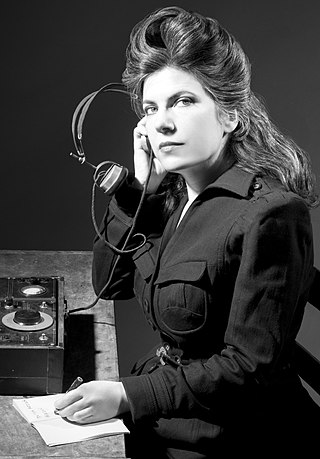
Annie Gosfield is a New-York-based composer who works on the boundaries between notated and improvised music, electronic and acoustic sounds, refined timbres and noise. She composes for others and performs with her own group, taking her music to festivals, factories, clubs, art spaces and concert halls. Much of her work combines acoustic instruments with electronic sounds, incorporating unusual sources such as satellite sounds, machine sounds, detuned or out-of-tune samples and industrial noises. Her work often contains improvisation and frequently uses extended techniques and/or altered musical instruments. She won a 2012 Berlin Prize.
Alf Evers was an American historian who lived in Ulster County, New York for much of his life and wrote lengthy, definitive histories of the Catskills and Woodstock, serving the latter as town historian. At the time of his death his history of Kingston was nearly complete and awaited publication.
The Orchestra of St. Luke's (OSL) is an American chamber orchestra based in New York City, formed in 1974. The orchestra performs at several venues in New York City, including, Carnegie Hall, Caramoor Center for Music and the Arts, Saint Thomas Church (Manhattan), Congregation Emanu-El of New York, and Merkin Concert Hall.

Stephen Rowley Montague is an American composer, pianist and conductor who grew up in Idaho, New Mexico, West Virginia and Florida.
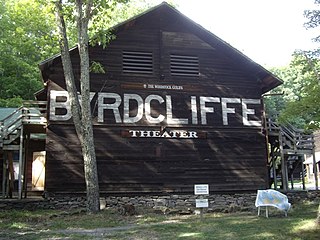
The Byrdcliffe Colony, also called the Byrdcliffe Arts Colony or Byrdcliffe Historic District, was founded in 1902 near Woodstock, New York by Jane Byrd McCall and Ralph Radcliffe Whitehead and colleagues, Bolton Brown (artist) and Hervey White (writer). It is the oldest operating arts and crafts colony in America. The Arts and Crafts movement arose in the late nineteenth century in reaction to the dehumanizing monotony and standardization of industrial production. Byrdcliffe was created as an experiment in utopian living inspired by the Arts and Crafts movement.
Grace Greenwood Ames was an American artist and social realism muralist. She worked in Mexico on murals alongside historical artists.
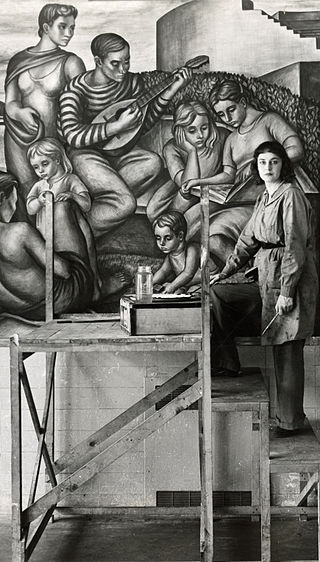
Marion Kathryn Greenwood was an American social realist artist who became popular starting in the 1920s and became renowned in both the United States and Mexico. She is most well known for her murals, but she also practiced easel painting, printmaking, and frescoes.
Woodstock Revisited is a 2009 documentary film by David McDonald that tells the story of how the countercultural movement associated with The Woodstock Festival came into being.
The Cassatt String Quartet was founded in 1985. Originally the first participants in Juilliard's Young Artists Quartet Program, the Quartet has gone on to win many teaching fellowships and awards and has toured internationally. Named after impressionist painter Mary Cassatt, the quartet is based in New York City.

Ralph Radcliffe Whitehead was an English philanthropist and the founder and chief benefactor of the Byrdcliffe Arts and Crafts Colony located in Woodstock, New York.
Music Biennale Zagreb is an international festival of contemporary music in Zagreb, Croatia, organized by the Croatian Composers' Society. The Biennale, founded by Milko Kelemen and held every spring of the odd years since 1961, has become one of the most important festivals of contemporary music in Europe.

Woodstock is a town in Ulster County, New York, United States, in the northern part of the county, northwest of Kingston. It lies within the borders of the Catskill Park. The population was 6,287 at the 2020 census, up from 5,884 in 2010.
Alexander Platt is an American symphony orchestra conductor and music director. He is currently the music director for Maverick Concerts, the Wisconsin Philharmonic, and the Waukegan and La Crosse Symphony Orchestras.
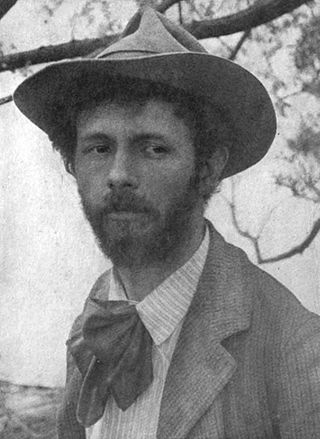
Hervey White (1866–1944) was an American novelist, poet, and community-builder. He was one of the original founders of the Byrdcliffe Colony in Woodstock, New York, then went on to create a more radical artists' colony, the Maverick. Both Byrdcliffe and the Maverick are part of what is today called the Woodstock Art Colony.

Bolton Coit Brown was an American painter, lithographer, and mountaineer. He was one of the original founders of the Byrdcliffe Colony in Woodstock, NY, part of what is now referred to as the Woodstock Art Colony.

Martha Dewing Woodward (1856–1950) was an American artist and art teacher. According to her obituary in The New York Times, she was "one of the nation's leading painters." Among her accomplishments, she founded the first art school in Provincetown, Massachusetts, in 1896. In 1907, Woodward and her partner, Louise Johnson, founded the Blue Dome Fellowship in Woodstock, New York, which Woodward continued in Florida after her move there. Woodward's art and teachings thrived in Florida, where her work had a lasting impact.
Voice Theatre is a regional theater company located in Woodstock, New York and uses the Byrdcliffe Theater to stage its productions during their season. Director and playwright, Shauna Kanter, has been its artistic director since its inception.



